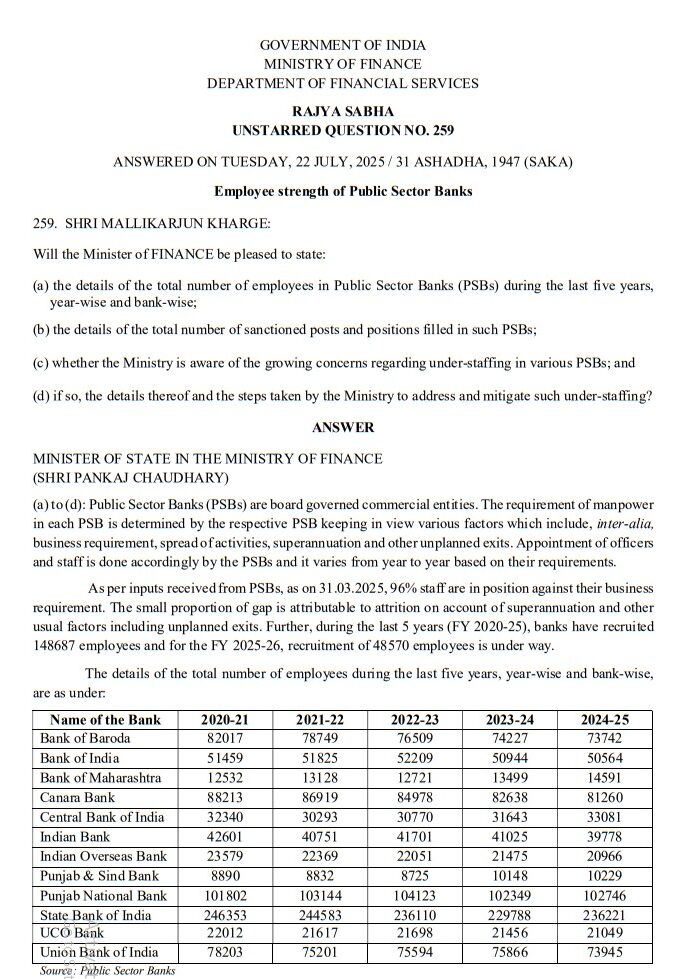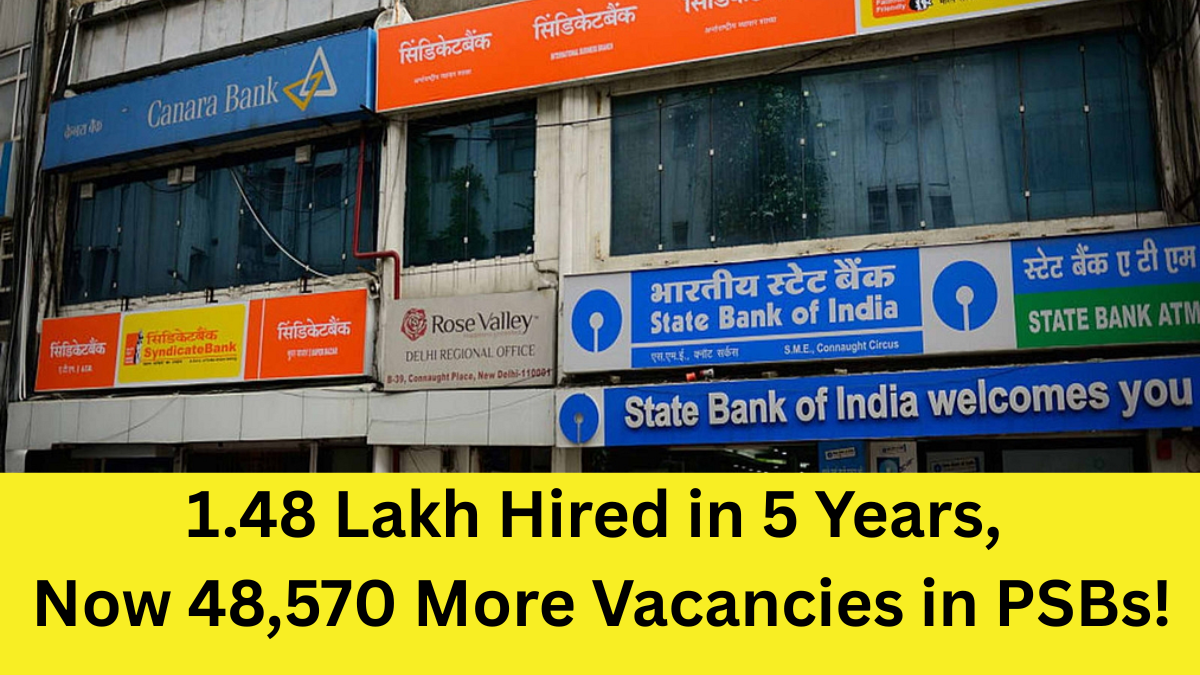India’s Public Sector Banks (PSBs) continue to remain one of the largest recruiters in the country, with massive intake drives ensuring staffing needs are regularly met. According to a response given in the Monsoon Session of the Rajya Sabha, it has been revealed that 1,48,687 employees were recruited across various PSBs over the last five financial years (FY 2020-25). Now, looking ahead, an additional 48,570 posts are expected to be filled in the financial year 2025-26, marking yet another year of robust hiring across the banking sector
1.48 Lakh Hired in 5 Years, Now 48,570 More Vacancies in PSBs
With nearly 1.48 lakh recruitments already done (from 2020-25) and 48,570 more planned (in 2025-26), PSBs continue to offer one of the most secure and growth-oriented career paths in government service. This information came to light through a question raised by Shri Mallikarjun Kharge on the employee strength of PSBs, which was answered by Shri Pankaj Chaudhary, Minister of State in the Ministry of Finance. The detailed reply sheds light on both recruitment trends and the current staffing situation across public sector banks in India.

Banking Recruitment Drive in Full Swing
The planned recruitment of 48,570 employees in FY 2025-26 underlines the proactive steps being taken to fill up the remaining gap and strengthen manpower across bank branches. These vacancies are expected to be filled through regular recruitment exams conducted by IBPS, SBI, and other bank-specific selection boards. Posts such as Probationary Officers (PO), Clerks, Specialist Officers (SO), and Assistant Managers are typically part of these drives.
96% Staff in Position: Minimal Vacancy Gap
As per the data provided, 96% of the total staff requirement is already in place across PSBs as of March 31, 2025. The remaining 4% gap is said to be due to natural attrition, including retirements, resignations, and other unforeseen factors. This clearly indicates that PSBs are effectively managing their workforce and continue to meet operational demands without major staff shortages.




 Daily Current Affairs Quiz 2025 31st Dec...
Daily Current Affairs Quiz 2025 31st Dec...
 Federal Bank Office Assistant Syllabus 2...
Federal Bank Office Assistant Syllabus 2...
 OICL AO Syllabus and Exam Pattern 2026, ...
OICL AO Syllabus and Exam Pattern 2026, ...







